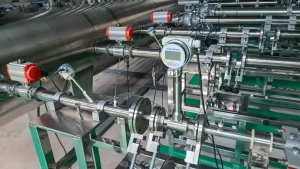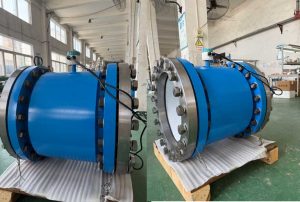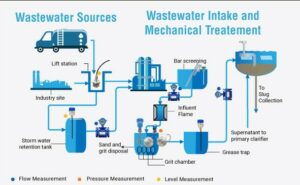Looking for the best gas flow meter to use in your work? No matter if you’re looking at a vortex flow meter, a thermal flow meter, or a pitot tube differential pressure meter, this guide will assist you in picking the ideal choice for your situation.
Two Common Mistakes in Gas Flow Meter Selection
 Mistake #1: Choosing by Pipe Size Only
Mistake #1: Choosing by Pipe Size Only
Choosing a gas flow meter only by its pipe diameter is not a good practice. Flows meters are matched with certain working situations and gas characteristics. It’s not possible that a single technology works for everyone.
Never forget to keep in mind your application’s gas, its range of flow, pressure, and temperature.
 Mistake #2: Focusing Only on Price or Brand
Mistake #2: Focusing Only on Price or Brand
Equipment that costs less generally has inferior features, which can bring about inaccurate gas results. However, premium brands may still fail if they do not go well with your operating conditions.
Smart buyers look for performance compatibility, not just logos or discounts.
Real Case: Wrong Flow Meter Choice Delayed a Project
A distributor provided a vortex gas flow meter by only using the pipe diameter, not respond to the customer’s decreasing gas demand and continuous low flow. The result? There were many inaccuracies in the low-flow settings and the project was constantly delayed.
Poor selection increases service costs and risks your reputation.
How to Choose the Right Gas Flow Meter
To make a successful gas flow meter selection, evaluate the following seven key factors:
1. Confirm Gas Composition
Is the gas clean and dry? Does it contain moisture, oil mist, or corrosive components?
- Thermal flow meters : require clean, dry gas with no liquid water.
- Pitot tube differential pressure meters : require non-corrosive gases.
- Vortex flow meters : must consider lower limit of flow measurement.
2. Confirm Actual Flow Rate
Is your system’s flow rate within the meter’s measurable range?
3.Pipe Size & Probe Length
For insertion gas flow meters:
- 250 mm probe: suitable for DN25–DN250
- 400 mm probe: suitable for DN25–DN600
4. Accuracy Requirements
Standard: ±1.5%. High Accuracy (±1%): available upon request
5. Temperature Conditions
- For high-temperature gas (>200°C), use high-temp vortex meters
- For humid gas: enable anti-condensation design in differential pressure types
6. Pressure Range
- Pitot Tube:max 16 bar
- Thermal Flow Meter : available in 16 / 40 / 64 bar options
- If pressure is <3 bar, ask for low-pressure calibration for better accuracy.
7. Additional Details to Confirm
- Pipe layout and straight run length
- Need for accessories (e.g., ball valve, power module, communication converter)
Need a Quick-Reference Gas Flow Meter Selection Table? Yes—we’ve got it!
| Application Scenario | Insertion DP Flow Meter | Insertion Thermal Flow Meter | Inline Thermal Flow Meter | Vortex Flow Meter |
|---|---|---|---|---|
| Installation without stopping gas flow |  |
 |
||
| High requirements for low pressure drop |  |
 |
 |
|
| One flow meter adaptable to multiple pipe sizes |  |
 |
||
| Installed before post-treatment: with condensate, unclean gas (e.g., compressor outlet) |  |
 |
||
| Micro-flow measurement at gas usage points (clean gas, no condensate) |  |
 |
||
| High-pressure applications (16–64 bar), low velocity, clean gas, no condensate |  |
 |
||
| Vacuum flow measurement under clean conditions |  |
 |
||
| Blower flow measurement (low pressure, large pipe size) |  |
 |
||
| Small pipe applications (< DN32) |  |
 |
||
| High temperature, high pressure, or humid gas (e.g., steam) |  |
We are a manufacturer of automatic flow meters with many years of experience in the industry. We have strong independent research and development capabilities and are a leader in the flow meter industry. Our main products include electromagnetic flow meters, vortex flow meters, turbine flow meters, ultrasonic flow meters, Coriolis flow meters, various solenoid valves, level meters, control units and valves, etc. Welcome to purchase –Best Instrument






